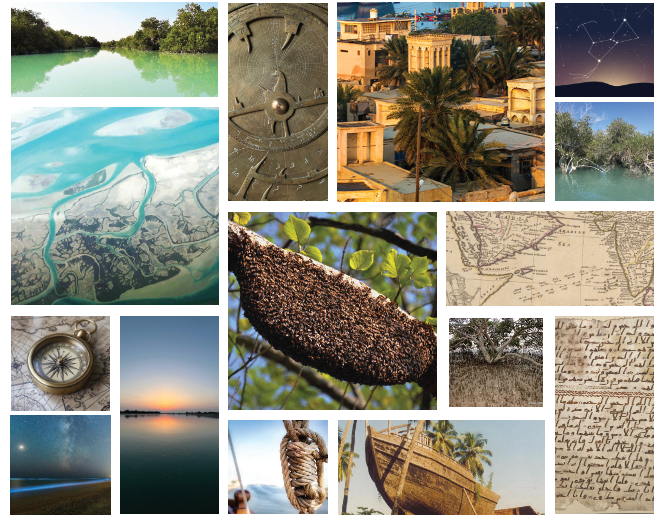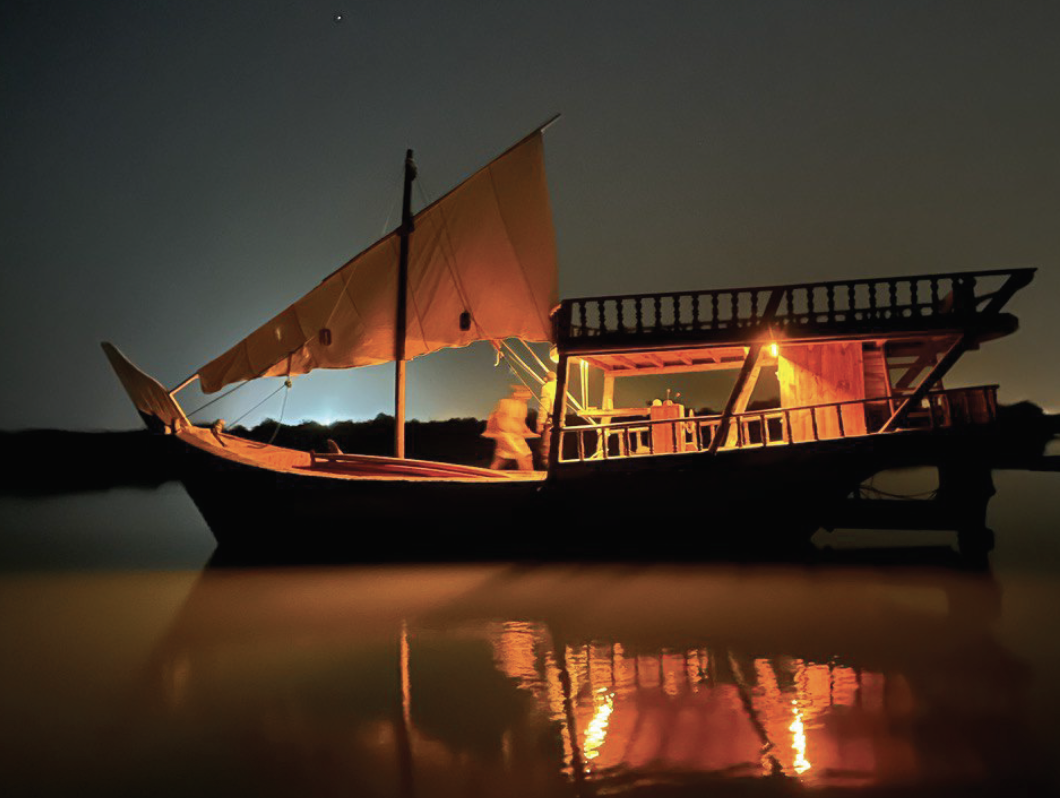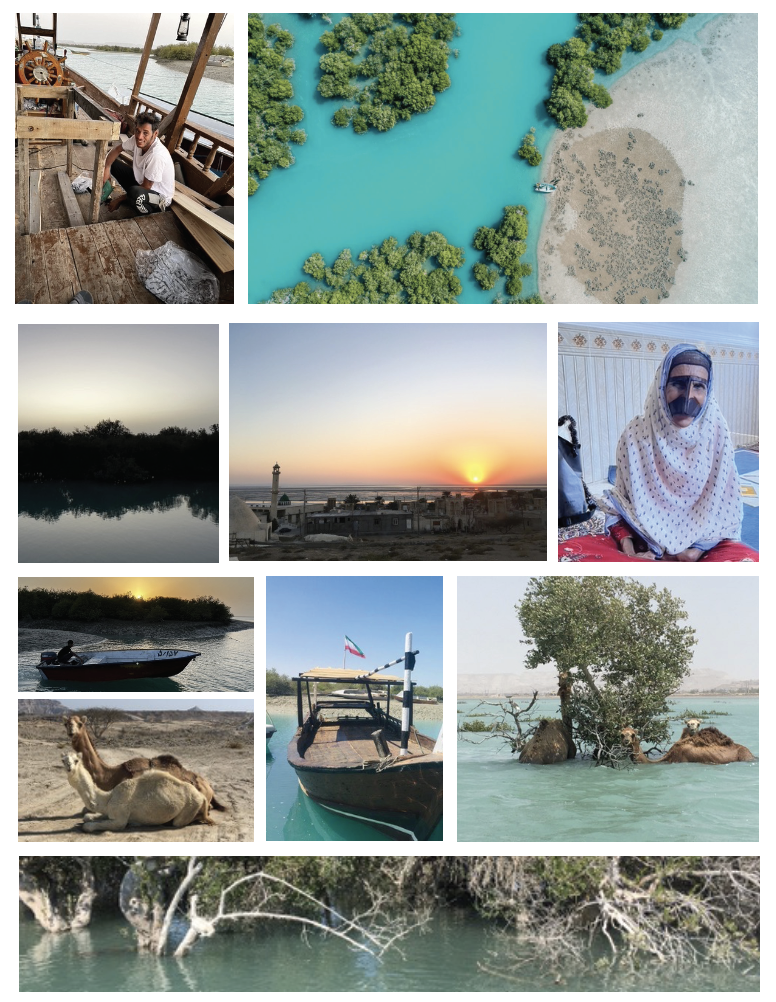Listening to the Tide

Reimagining Economic and Ecological Relationships through Life-Centered Design on Qeshm Island
Setting: Tabl Village, Qeshm Island
Qeshm Island sits in the Persian Gulf off Iran's southern coast as the region's largest island and home to a UNESCO Global Geopark. The island draws visitors with its unique geological formations, pristine mangrove forests, and rich cultural heritage that weaves together Persian, Arab, and African influences. Tabl village, a small community on the island's northern coast, rests at the heart of one of the region's most ecologically vital mangrove ecosystems.
The Challenge
Six years ago, Tabl village and the broader Qeshm Island region grappled with a tangled web of interconnected problems. Tourists flocked to the island's pristine mangrove ecosystems but unknowingly damaged the environment through conventional tourism practices. Local communities found themselves trapped in cycles of economic hardship, with few pathways to sustainable income. Meanwhile, distant governmental structures moved too slowly to address the mounting pressures on both people and place.Rather than waiting for policy changes or imposing external solutions, Charshanbe chose a different path, one that would fundamentally reshape how economic development and ecological stewardship could work together.
The Approach: Life-Centered Design
Life-Centered Design goes beyond human-centered approaches by recognizing ecosystems, natural rhythms, and non-human life as active stakeholders in the design process. This methodology doesn't just consider environmental impact—it positions nature as a collaborator and beneficiary of human systems.
Note: The phases described below don't operate as static or linear steps. They run in parallel with continuous iteration, reflecting the organic nature of community-centered work.
The Art of Deep Listening
Before introducing any interventions, our team began attuning ourselves to the subtle rhythms of Tabl village—the ebb and flow of tides, the patterns of daily life, and the unspoken stories held in gesture and silence.What this looked like:
- Sharing meals in local homes and participating in daily routines
- Joining fishing expeditions and observing traditional practices
- Attending informal gatherings without notebooks or cameras
- Learning the local dialect and understanding cultural nuances
Critical discoveries:
- Many community members had internalized a narrative of powerlessness, believing meaningful change was impossible
- The relationship between locals and their environment was far more complex than outsiders assumed
- Previous failed development initiatives had eroded trust in external promises
- Traditional ecological knowledge was rich but undervalued by outside forces
This foundation phase revealed that sustainable change would require shifting internal
Designing Regenerative Systems
Armed with deep community insight and with community members as our allies, we began co-creating interventions that served multiple stakeholders, including the mangrove ecosystem itself.
Intervention 1: Fishing Boat Transformation Initiative
The shift: From extraction-based fishing to regeneration-based eco-tourismWorking with local boat captains, we redesigned traditional lenj vessels—the iconic wooden boats of the Persian Gulf that have served these waters for over 300 years—as specialized eco-tourism boats. Lenj boats, with their distinctive curved hulls and time-tested craftsmanship, were originally built for fishing, pearl diving, and trading across the Indian Ocean. These weren't superficial modifications—we rebuilt them for slower, more contemplative journeys through the mangroves while honoring their UNESCO-recognized heritage design.
Impact:Captains reported revenue increases of 600%, while tourists spent significantly more time in nature, developing a genuine appreciation for the ecosystem's complexity. The slower pace allowed captains to share their deep knowledge of mangrove ecology with visitors, transforming them from boat operators into cultural and environmental educators.

Intervention 2: Cultural Heritage Economy
The shift: From importing generic souvenirs to celebrating local craft traditionsWe collaborated with women artisans to develop a line of handmade goods that told the stories of Qeshm's cultural heritage. Each piece connected visitors to the island's history while creating new income streams.
Impact:Some local women became full-time artisans, and the products became sought-after symbols of an authentic travel experience.
Intervention 3: Living Knowledge School (Planned)
The shift: From formal education disconnected from place to integrated learning rooted in local wisdomWe're developing an informal educational program that combines:
- Traditional ecological knowledge about mangrove systems
- Ancient boat-building and sailing techniques
- Storytelling and cultural preservation practices
- Modern conservation science
Expected Impact:This initiative aims to increase youth engagement in community life, with participants becoming cultural ambassadors and ecology guides.
The Life-Centered Difference
| Traditional Approach | Life-Centered Approach |
|---|---|
| Solves human problems | Addresses ecosystem relationships |
| Measures economic output | Tracks regenerative capacity |
| Designs for efficiency | Designs for resilience |
| Serves customers | Serves the web of life |
| Implements solutions | Cultivates conditions |
The mangrove ecosystem became our primary client—we designed systems that would help it thrive, knowing that human wellbeing would naturally follow.
Outcomes: Six Years Later
Economic Transformation
- Average household income increased by 400%
- Tourism revenue became 60% more sustainable and predictable
- New small businesses emerged organically from the community
- Women's economic participation expanded significantly
Social Renaissance
- Traditional knowledge sharing flourished across generations
- Community decision-making processes became more collaborative and inclusive
- Cultural pride and identity were strengthened throughout the village
Systems Resilience. Most importantly, these changes created self-reinforcing loops. The community now leads its development initiatives, with new projects emerging organically from local innovation and creativity.
Epilogue: The Continuing Story
Today, Tabl village serves as a living laboratory for regenerative development. The project continues to evolve and expand, with the community transforming from student to teacher. They now host delegations from other islands and coastal communities throughout the Persian Gulf region, all seeking similar transformation.The mangroves of Qeshm continue to expand their reach. The boats still move slowly through the channels of Tabl's waters. And in the evening, when the tide retreats, you can hear the stories being told—stories of a community that learned to listen to the rhythm of the place they call home.This case study represents an ongoing collaboration between human communities and natural systems in Tabl village, Qeshm Island. The work continues to evolve as relationships deepen, with new phases of development launching each year.
